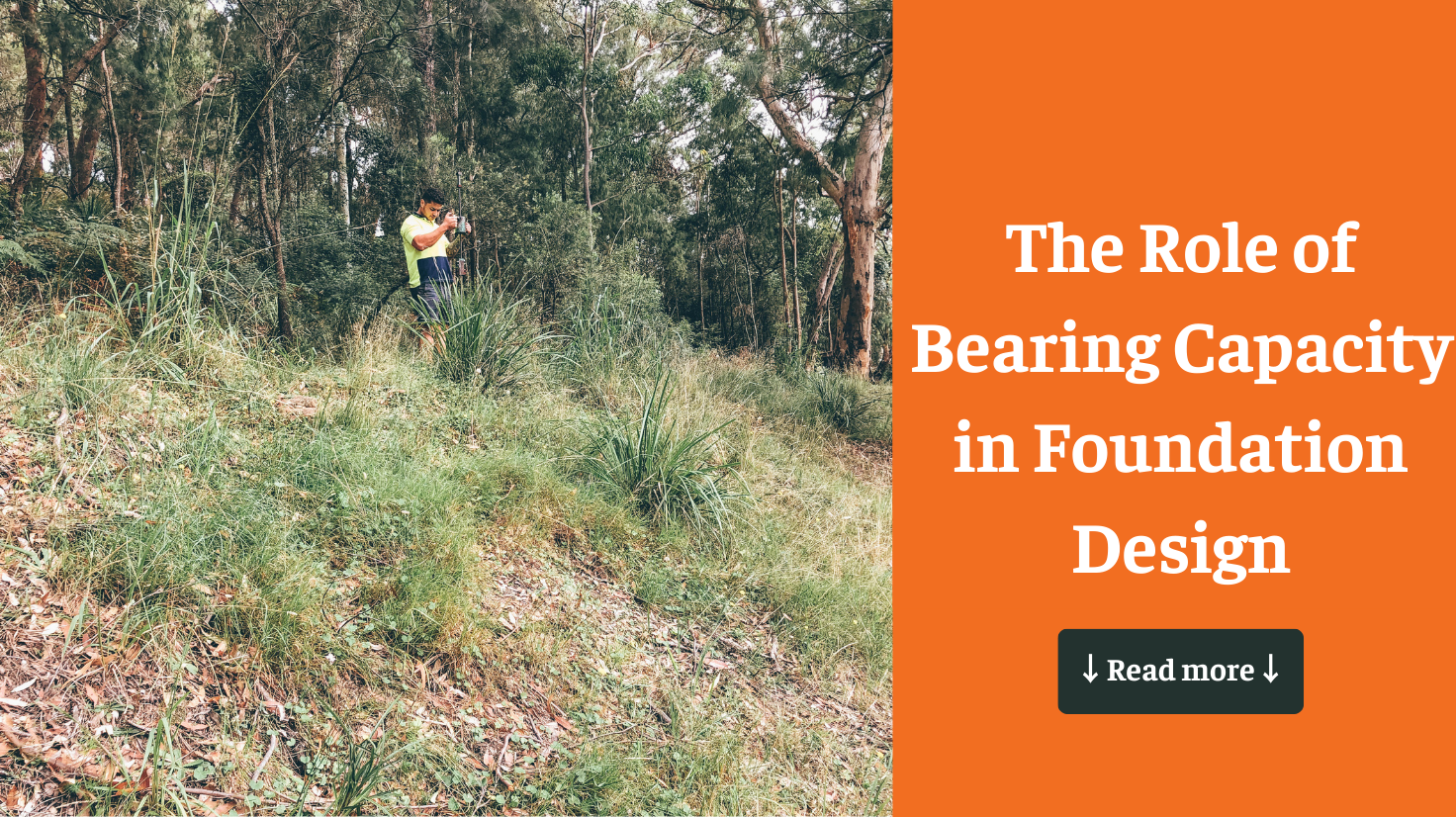When it comes to designing foundations for any structure, understanding the bearing capacity of the soil is of paramount importance. The bearing capacity directly influences decisions related to the size, type, and depth of foundations, ultimately ensuring the safety and stability of buildings and other structures.
This discussion explores how soil bearing capacity impacts foundation design and construction decisions, highlighting the key considerations for engineers and builders.
1. What is Bearing Capacity?
Bearing capacity refers to the maximum load per unit area that the ground can support without experiencing shear failure or excessive settlement. It is a fundamental parameter in geotechnical engineering and plays a crucial role in foundation design. The bearing capacity of the soil determines the extent to which the ground can support the weight of a structure, influencing the design of foundations to ensure they are both safe and effective. A proper understanding of bearing capacity is essential for avoiding structural failures and ensuring the long-term stability of buildings.
2. Importance of Bearing Capacity in Foundation Design
The bearing capacity of soil is a key factor that directly impacts several aspects of foundation design. Here are the critical ways in which bearing capacity influences these decisions:
2.1 Foundation Size and Type
The soil’s bearing capacity significantly affects the dimensions and type of foundation required for a structure:
- High Bearing Capacity Soils: Soils with a high bearing capacity can support larger loads, allowing for the use of smaller, more economical foundations. This reduces construction costs and materials while still ensuring that the structure is securely supported.
- Low Bearing Capacity Soils: In contrast, soils with lower bearing capacities may require larger or more specialised foundations, such as raft foundations or piled foundations, to safely distribute the structural load. These foundations are designed to spread the load over a larger area or transfer it to deeper, more stable soil layers.
2.2 Foundation Depth
The depth at which a foundation is placed is another critical consideration influenced by the soil’s bearing capacity:
- Shallow Foundations: For soils with adequate bearing capacity near the surface, shallow foundations such as strip footings, pad footings, or mat foundations may be suitable. These foundations are cost-effective and simpler to construct, making them ideal for residential and light commercial buildings.
- Deep Foundations: When surface soils exhibit low bearing capacity or are prone to significant settlement, deep foundations are required. Deep foundations, such as piles or drilled shafts, extend into stronger, more stable soil or rock layers, ensuring that the structure is supported by materials with sufficient bearing capacity. This approach is commonly used in large-scale infrastructure projects and buildings on challenging sites.
2.3 Load Distribution
Proper assessment of bearing capacity is essential for determining how the load from the structure will be distributed to the soil:
- Uniform Load Distribution: A well-designed foundation distributes the load evenly across the soil, reducing the risk of differential settlement. Differential settlement occurs when parts of a structure settle at different rates, leading to cracks and structural damage. By ensuring uniform load distribution, engineers can prevent such issues and maintain the integrity of the structure.
- Point Loads and Concentrated Loads: In cases where the load is concentrated, such as under columns or heavy machinery, the foundation must be designed to handle these point loads without overstressing the soil. This often requires thicker or reinforced foundations that can spread the load over a wider area.
2.4 Safety and Stability
Accurate assessment of soil bearing capacity is crucial for the safety and stability of the structure:
- Preventing Foundation Failure: Overestimating the bearing capacity of the soil can lead to foundation failure, resulting in severe structural damage or even collapse. Conversely, underestimating the bearing capacity can lead to overly conservative designs, driving up construction costs unnecessarily. A balanced, accurate evaluation ensures that the foundation design is both safe and cost-effective, providing long-term stability for the structure.
3. Bearing Capacity Assessment Methods
To accurately determine the bearing capacity of soil, geotechnical engineers utilise several assessment methods. Each method provides valuable insights into soil properties, helping to inform foundation design:
- Standard Penetration Test (SPT): The SPT is a widely used method that provides an indication of soil strength by measuring the resistance of the soil to penetration by a standardised sampler. The number of blows required to drive the sampler a set distance into the soil is recorded, and these results are used to estimate the soil’s bearing capacity. The SPT is particularly useful for assessing a wide range of soil types, including sands, clays, and silts.
- Cone Penetration Test (CPT): The CPT involves pushing a cone penetrometer into the ground at a constant rate and measuring the resistance to penetration. This method offers continuous profiles of soil resistance, providing detailed information about the stratigraphy and bearing capacity of the soil. The CPT is highly accurate and is often used in combination with other tests for a comprehensive assessment.
- Plate Load Test: The Plate Load Test is a direct method of assessing bearing capacity, where a steel plate is placed on the soil surface, and incremental loads are applied. The settlement of the plate under each load is measured, providing a clear indication of the soil’s load-bearing capability. This test is particularly useful for shallow foundations and gives engineers a direct measurement of how the soil will behave under load.
- Pressure meter Test: The Pressuremeter Test evaluates the soil’s deformation under controlled pressure applied within a borehole. This test provides detailed insights into the soil’s stress-strain behaviour, making it particularly useful for complex or variable soil conditions. The results help engineers understand how the soil will respond to the loads imposed by the foundation.
- Vane Shear Test: The Vane Shear Test is especially useful for soft clays. It measures the shear strength of the soil by determining the torque required to rotate a vane inserted into the ground. The results can be correlated with the bearing capacity, providing valuable information for designing foundations in areas with soft, cohesive soils.
4. Conclusion
Understanding and accurately assessing the bearing capacity of the soil is fundamental to foundation design. It influences critical decisions regarding the size, type, and depth of foundations, ensuring the safety and stability of the structure. By employing reliable assessment methods such as SPT, CPT, Plate Load Test, Pressure meter Test, and Vane Shear Test, engineers can design foundations that are both safe and cost-effective.
Ideal Geotech specializes in providing comprehensive bearing capacity assessments and lot classification reports within 5-7 days in metro areas. Our experienced team and extensive fleet of geotechnical rigs cover NSW, and Southeast Queensland.
For more information or to request a site classification report, visit our website or contact our team today. Ensure your construction project is built on solid ground with a thorough geotechnical report from Ideal Geotech.







